TL:DR – A tongue-in-beak glossary of birding terms and twitching slang in alphabetical order. Italicised terms have a definition in the glossary. This, like my proboscis-in-palp mothing glossary, is a work-in-progress.
Audio Birding – Birding activity that involves listening for or recording bird calls or song rather than visual observation, although can also be part of birdwatching and birdspotting. A useful app for audio birding and birding activities in general is Merlin, which can ID a bird from a photo or from its call or song with great accuracy. Audio Birding at night with a particular focus on migrants is known as NocMig.
Aves – Any of the 11000+ extant species of warm-blooded vertebrates we refer to as birds, all of which have evolutionary ancestry in the theropod dinosaurs.
Barwit – Bar-tailed Godwit, see also Blackwit.
Beardie – Bearded Reedling (Bearded Tit). The species is neither bearded nor a tit.
Bins, binos, binoculars – Usually lightweight and less powerful alternative to carrying a scope. However, many birders will carry both as the wider viewing angle of a pair of bins compared to a scope will allow them to scan the horizon more quickly, for instance, before focusing the scope on a distant lifer.
Birder, birding – Someone interested in watching birds, their avian-related hobby (not to be confused with the raptor known as the Hobby).
Birdy Club – The Royal Society for the Protection of Birds (RSPB). From Tobias Smith.
Blackwit– Black-tailed Godwit, see also Barwit.
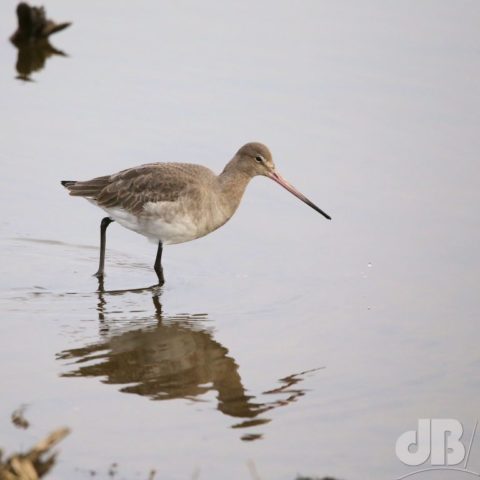
Blind – US term for a hide, commonly a birdhide.
Bonxie – An apt-sounding nickname for the Great Skua, a term used in Shetland of Norse origin, these birds can kill and eat kittiwakes and even juvenile Great Black-backed Gulls.
BTO – British Trust for Ornithology, pretty much just birds, thank you.
BVD – Better view desired, often the result of spending many an hour in a hide while a given lifer is elsewhere on a reserve and only fleetingly seen from said hide.
Chase – US term for a twitch.
Chick – A baby bird.
Comic Tern – Refers to a specimen of Sterna where BVD. Distinguishing Common and Arctic at a distance when the specimen is not showing well will often lead to a Comic Tern being logged. See also, elsewhere, Marlow Tit, Willowchiff etc.
Confusion species – Any pairs or groups of bird that are so superficially similar that they cannot be identified definitively without either an expert eye or other means of more detailed examination. Examples might include various wader species, gulls, warblers etc.
Crest – Referring to either UK kinglet: Goldcrest or Common Firecrest.
Cryptic plumage – Feather patterning that allows it to blend particularly well with its surroundings. Birds such as Snipe have such cryptic plumage camouflage that lets them become almost invisible in their usual habitat.
Digibinning – Taking photos with a camera or smartphone aligned with one of the eyepieces of a pair of binoculars. Many birders will use a special adapter to clip camera and binocular together for this purpose.
Digiscope, digiscoping – Taking photos with a camera or smartphone aligned with the eyepiece of a scope. Many birders will use a special adapter to clip camera and scope together for this purpose.
Dip out – To not see nor hear the target of a twitch.
Dirtbird – (Offensive) Any common bird an experienced birder has seen many times before. Of course, every bird one sees is initially a lifer. It is not nice to use this term for any of our feathered friends.
Disturbance buffer – Alternative term for the exclusion zone around a bird that is bound by its FID.
Drift migration – An often happy circumstance in which weather patterns conspire to push birds from one region into another where they are not commonly observed.
Duck’s bottom technique – When birding on a lake or other body of water, it is often worth checking the water of a distant shore for reflections of duck’s bottoms or parts of other species where the bird may well be cryptic or hidden from direct view, but can be seen in the reflection.
Eclipse plumage – Eclipse plumage is dull, female-like feathers that a male bird shows after breeding is over. It is most common in ducks and so we talk of an “eclipse drake”. The feathers “eclipses” the drake’s usual bright plumage, not only making him unattractive to females but also giving him camouflage while he moults and grows new wing feathers.
Exclusion zone – The area around a bird that when breached will spook or flush it and cause it to take flight, closely related to FID. May also be referred to as a disturbance buffer.
Extant – A living species, the opposite of extinct.
Extinct – It has ceased to be, when referring to a species. The opposite of extant.
Fall – Sudden arrival of (sea-going) migrants usually their having been forced to touch down on land because of inclement weather. Sometimes an opportunity for ticking a lifer.
Field Mark – A characteristic, such as an eye ring, feather patterning, curve to the beak, or other such feature that allows one to make a fairly positive ID of an ambiguous sighting particularly when BVD and not showing well.
Flight Initiation Distance (FID) – Approximately as close as you might get to a given species under “normal” conditions before the bird will take fright and thus flight. Some birders talk of exclusion zones,
Flush – A deliberate or unwitting action that spooks a bird into taking flight, allowing a brief sighting for the flusher to the detriment of twitchers and birders who may arrive later and miss the opportunity to tick the species. A polite way of saying “disturb”, best avoided for the sake of the birds, not good birding practice.
Fly-through – A bird only observed in flight that fails to land for a portrait or a better view with one’s bins or scope.
Fudge Duck – Ferruginous Duck, Aythya nyroca, also known as the Ferruginous Pochard, Common White-eye or White-eyed Pochard
Grilling – Observing a bird closely.
Gripped out – Feeling aggrieved that others successfully twitched when one dipped out.
Gropper – Grasshopper Warbler
Gulling – To spend time birding at a site attended by lots of gulls, commonly waste tips or adjacent fields and flooded land. Common aim is to spot scarcities or “white wingers” among the more regular gulls.
Hide – A screened area or wooden hut on a reserve, often with narrow viewing windows obscured by raisable flaps to allow birders to remain hidden from the birds they intend to watch. Often the cause of BVD. Known as a blind in the US.
Hoodie – Hooded Crow, Corvus cornix. Item of casual clothing akin to a sweatshirt but with a hood.
In the bag – a keenly sought bird, ticked at long last.
In-off – A description of a migrant returning from abroad, as in the bird was in-off the sea.
Irruption – Extremes of heat, cold, drought, and food shortages can drive out large numbers of birds from their usual haunts and they might then arrive in another area where they are less commonly, if ever, seen. Conversely, flooding and insect and rodent plagues can attract an irruption of water birds and raptors respectively, for instance. Often leads to lifers, ticks, and megaticks.
Jizz/Giss – The overall impression of a bird based on size, shape, colour, (sometimes plumage), posture, flight, movements, song and call, habitat, and location, awareness of jizz provides for a positive ID even in the face of BVD.
Juvenile – A young, immature bird, usually one that is no longer considered a chick and has fledged.
LBJ – Little brown job, a small bird of bland colouration seen so briefly that a positive ID is not possible. See BVD.
Leucistic – A condition in which an individual bird may lack pigment in its plumage so that it has white patches or is mostly, but not wholly, white. If pigment is missing entirely from skin and eyes it would be referred to as an albino.
Life list – A record of all the birds one has ticked in one’s life.
Lifer – A bird seen for the first time by a birder or twitcher and added to their life list.
Local patch – One’s immediate environs in which need travel only a short distance to built a patch list.
Loon – American term for species of what British birders know as Divers. Members of the genus, Gavia.
Manky Mallard – Anas platyrhynchos can cross breed with the domestic duck (they’re the same species), leading to offspring with wayward markings such as white patches. The term Mucky Duck might also be used.
Mega – A bird very rarely, if ever seen on a given patch, one that will be a lifer for almost everyone on the patch who sees it.
Megatick – A really good sighting due to the bird being a mega or otherwise difficult to find because it rarely shows well. Almost always a lifer for most birders that see it.
Migrant – A species that relocates depending on seasonal and lifecycle factors, commonly from one part of the world to another.
Mobile – Refers to the tendency of a putative lifer or indeed any other specimen a birder hopes to see traversing great distances from the site at which you just arrived, to the site you just left or elsewhere.
Monocular – An even lighter-weight alternative to binoculars for use with one rather than two eyes. A mini, handheld scope.
Moult – The shedding of feathers at different stages of the avian life cycle, from chick to juvenile to sexually mature adult, also at the end of the breeding season when an adult has raised offspring and is worn.
Naturalised – The state in which a non-native species establishes itself in a new location and becomes an endemic breeding bird in that location.
NocMig – Listening out for the sounds of migrants flying overhead at night. Often involves recording the calls and using software to extract an ID from several hours of recordings.
Occam’s razor – A useful tool for novice birders to use when reporting a sighting of a rare species whose jizz is very close to that of another species. Occam’s razor suggests that the simpler explanation is more likely than the exceptional. For instance, that Curlew Sandpiper at RSPB Minsmere was more likely to have been a Dunlin, and so probably was, especially if it was BVD. Similarly, in very early spring a Willow Warbler will probably turn out to be a Chiffchaff. Occam’s razor should be wielded in all walks of life. Honest mistakes are not to be confused with deliberate stringing.
Oddie Box – (Enclosed) birdwatching hide, named per famous celebrity birder, comedian, songwriter, and former “Goodie”, the inimitable Bill Oddie. From Tobias Smith.
Ornithology – The branch of the zoological sciences that deals with birds, the endothermic vertebrates known as aves.
Passage – The journey(s) made by migrant species.
Passage migrant – A bird seen in a given location only during its migration from one place to another and does not spend any substantial period in that location.
Passerine – Perching. From the Latin “passer”, meaning sparrow. More than half of known extant bird species are classed as passerine birds.
Patch list – A record of avian species seen in one’s local environs, one’s local patch.
Pec Sand – Pectoral Sandpiper, a bird of the Americas that migrates in the autumn, heading South over the Atlantic but is often blown towards the British Isles by Westerly winds.
Pelagic birding – Observation and recording of birds flying over the open waters of the sea, done from either the shore or from a boat.
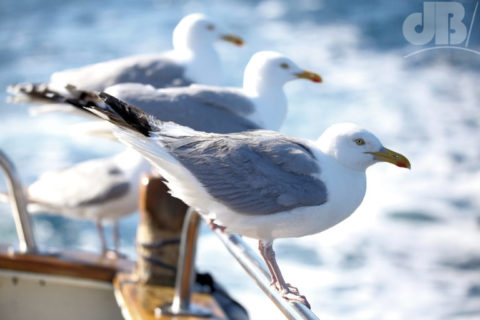
Pish – To make squeaks, tweets or whistles in proximity to a flock of tits or other birds in order to pique the curiosity that they might show well, albeit for only a moment.
Plastic – An escapee from a collection seen in the wild rather than a truly wild bird. A plastic bird may or may not be ringed, but not all ringed birds are plastic.
Plumage – Feathers, critical to a bird’s positive ID. Plumage can vary from mating to non-mating season, between winter and summer, chick to juvenile to adult.
Porn-starring – A bird showing really, really well, its jizz causing all kinds of ecstasy in the hide.
Positive ID – Definitive identification of a bird based on its jizz and other factors. Rarely BVD, except in the context of photography and almost certainly not LBJ or UFR.
Push – Usually a deliberate act of behaving in such a manner that a bird is flushed into a position where a better view can be had, often leads to flushing. Not good birding practice.
Quartering – Hunting. As in the raptor was quartering over its territory.
Raptor – Bird of prey including Eagles, Hawks, and Owls. See UFR.
RCP – Red-crested Pochard, once a newbie-confusing rarity, now increasingly common.
Reed Bunt – Reed Bunting.
Resident – Species that remains in its native territory throughout its lifecycle and does not migrate, although some residents nevertheless do migrate periodically and some migrants may become vagrants or residents depending on circumstances, such as climate change.
Ringing – Trapping and tagging of a bird, usually done by officials from BTO, RSPB or other conservation bodies for the sake of scientific studies of particular species. Also used by people who keep and show birds, such as pigeons. One or more coded or coloured metal or plastic rings are safely and securely fixed around the bird’s leg or legs. Similarly, tagging with plastic tabs can be secured to the wings or larger birds such as raptors for the same purpose as such birds might be able to remove rings from their legs with their beaks or talons.
Rouzel – Ring Ouzel. Ouzel is from the Old English for Blackbird, this member of the thrush family has an obvious ring around its neck, hence the name
RSPB – Royal Society for the Protection of Birds, charitable organisation with an obvious mission statement; also likes nature in general.
Sarnie – Sandwich Tern
Scope – Telescope, often referred to as a spotting scope, usually tripod mounted for viewing distant birds. The bigger, the better (usually), although clarity and lack of chromatic aberration are often more important to the view.
Shag – A crested species of seabird, often confused with the Cormorant.
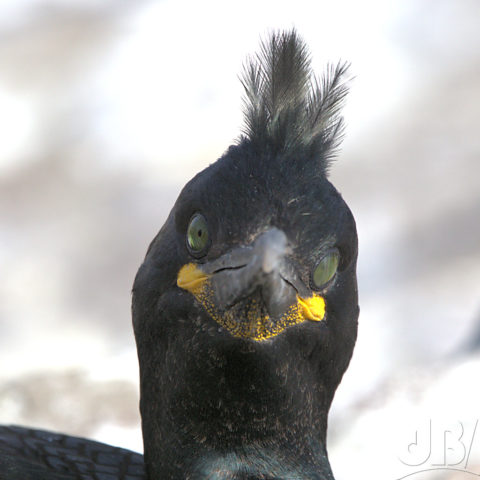
Shortie – Short-eared Owl, SEO
Short-stopping – When migratory species land and settle some distance from their usual destination. Causes might be need for food, injury or disease, or increasingly, climate change.
Showing well – Applies to the relative visibility and activity of a bird at a given site. As in the Beardies are showing well at RSPB Titchwell Marsh.
SOB – Spouse of a birder, a bird enthusiast’s significant other, commonly less interested in our feathered friends than said enthusiast. Often to be seen on reserves lugging heavy bags, coats, flasks, picnic hamper, and other accoutrements, while the enthusiast strides ahead to the likely spot where their lifer is showing well.
Song, call, alarm call – Vocal birds often make different sounds depending on activity, a song may be a territorial or courtship sound, whereas a call may be a more passive sound made while roosting perhaps, an alarm call does what it says.
Species – A term commonly used to refer to birds that are physiologically the same in terms of appearance, behaviour, biology, and genetics. They can breed and produce fertile offspring.
Species, Sub – A population of a species that exists in a different area and might vary in physical characteristics (morphology), but can nevertheless breed with members of any other populations.
Spooked – One explanation for the sudden departure of a putative lifer, just as you arrive to see it. Often due to nearby raptors but more commonly novice birders twittering loudly near a hide or pointing and waving their excited little arms out through the hide’s viewing flaps.
Spoonie – Spoonbill
Spotlighting – Nocturnal birding involving the use of a torch/flashlight for temporarily illumination.
Sprawk – Sparrowhawk
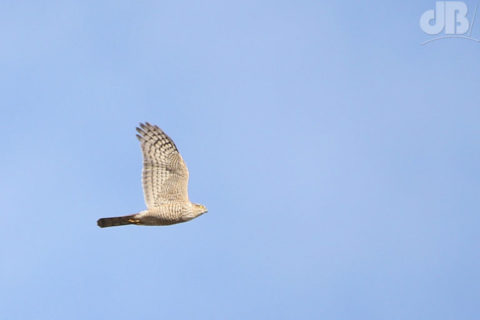
Spuggy – Geordie vernacular for House Sparrow or indeed, in ignorance of a bird’s jizz, any LBJ. Spug in Scotland. Northwest England spadger.
Stringing – Deliberately reporting a sighting of an interesting bird in a given location when said bird was most certainly not present, used maliciously by a rare breed of twitcher and birder with the intent of ruffling feathers (see plumage).
Supercilium – Basically, where the eyebrows would be. A distinct colouration, a supercilial stripe in a species could assist with a positive ID.
Talons – The claws of a bird of prey. Usually visible but can also be hidden talons.
Tape luring – The highly unethical practice of playing a recording of a bird’s call or song in the vicinity of where one might expect to see it in order to encourage it out into the open for a “tick” or a photo. At one time, this would have required the lurer to have an actual tape recording and a playback device, today there are countless bird apps that include recordings of birdsong.
Teaspoon – Spoonbill chick
Teaspoon, Flying – Long-tailed Tit
Tick – Whether BVD or showing well, a newly sighted bird for one’s life list or year list is ticked off in one’s proverbial notebook, on the “app” or simply in one’s head.
Tickable – A bird that is definitely the new species you were hoping to see, showing well, giss confirmed.
Togger (derog.) – A photographer with a keen and passionate interest in getting the best shot they can of a beautiful avian species. A term often used by twitchers and birders in a derogatory way. Some birders are toggers, some twitchers too. The photos in the bird books and magazines beloved of birders and twitchers will have been taken by a togger, needless to say.
Tower hide – A platform or elevated hide that allows a view of birds obscured by vegetation or distance.
Twitch – The act of twitching or a specific venture aimed at twitching a species.
Twitchable – Able to be twitched. But, also alluding to whether a species one may wish to see and tick is naturalised in that location.
Twitcher, twitching (derog.) – A person who will commonly apply unusual effort or expense to see a rare bird they have not seen before, their hobby. To paraphrase comedian, composer Tim Minchin “Only a twitcher can call another twitcher a twitcher.”
UFR – Unidentified flying raptor, the equivalent of an LBJ but for the multitude of high-flying hunting birds. See BVD.
Undershoot – The behaviour of a migratory bird that settles at a site short of its usual destination either because it finds suitable habitat en route or else weather, disease, injury or other factors lead it to cut short its journey.
Untickable – A bird that is definitely the new species you were hoping to see, but it was not showing well, it was too far away, obscured by foliage or glimpsed only fleetingly and no way of confirming entirely beyond any shadow of a doubt with respect to its giss that it was indeed that species.
Vagrant – Species that is usually thought of as a migrant that is seen in a part of the world where it is not commonly seen.
White winger – Any of the less commonly seen gulls that have completely white wings rather than the black wingtips of the less rare species.
Worn – In need of a moult. The bedraggled, frazzled look of an adult bird at the end of the breeding season, it having been worn out by the process of raising offspring.
Yaffle – East Anglian vernacular for the European Green Woodpecker on account of its scoffing, laughter-like alarm call in flight.
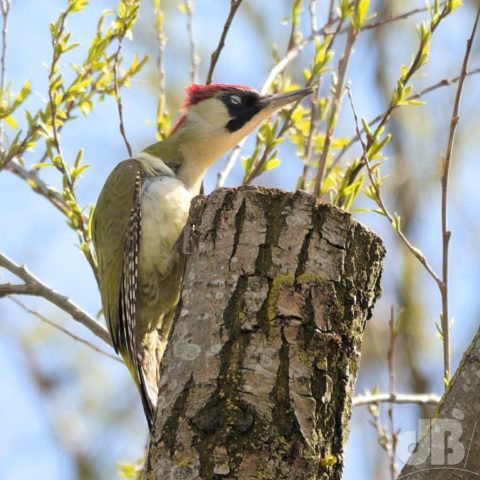
Yank (derog.) – A North American vagrant seen outside that continent, usually Europe.
Year list, life list – Most birders keep records of the different species they see, often noting jizz and other relevant information. A year list would, as the name suggests, be the birds that person has seen in a calendar year, whereas a life list, obviously, is a list of all the birds the person has seen. Many keep a patch list too, which is a record of birds noted on their local or most frequently visited area or a garden (yard) list. By definition, every bird on a life list is initially a lifer.
Some of the terms are “tongue-in-beak” you might say…bird nicknames can be found here.